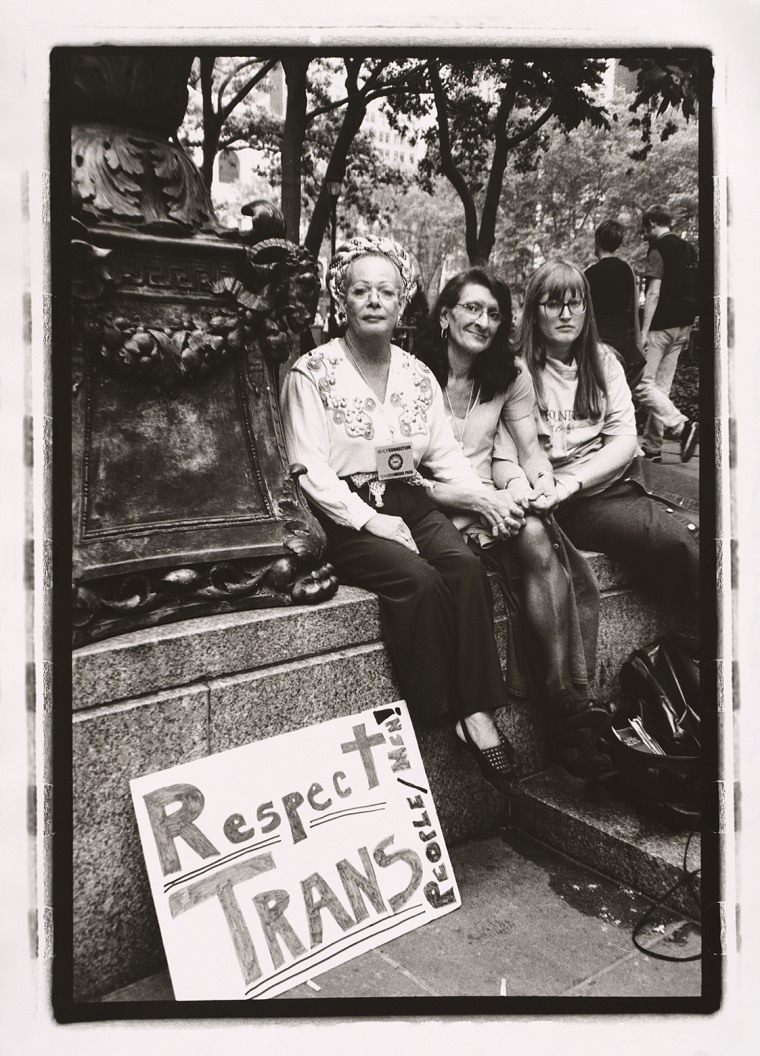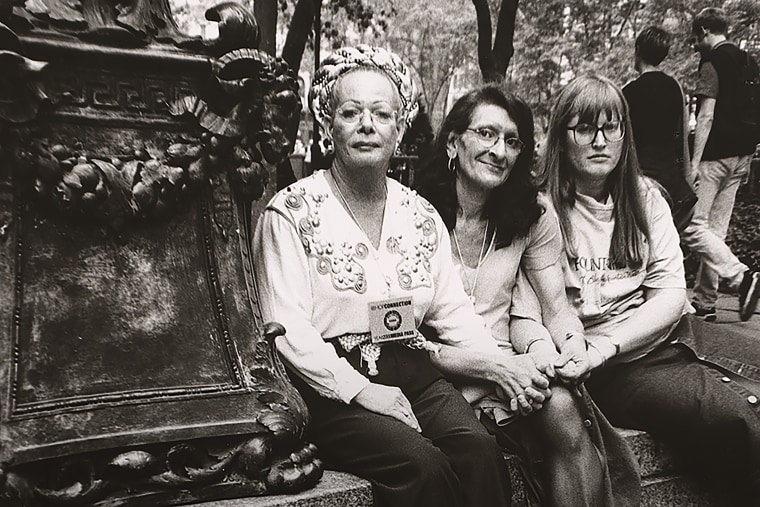The newest addition to the Smithsonian’s National Portrait Gallery is one for the history books. This week, the museum announced the first portrait of a transgender American to be included in its esteemed collection: A photograph of Sylvia Rivera, the woman who arguably put the "T" in LGBT.
One of the foremost activists in the national fight against gender discrimination, Rivera is best remembered as a veteran of the 1969 Stonewall riots. It was on June 28 of that year that she and other courageous members of the LGBT community stood up en mass against a police force that for years had been publicly humiliating them, as well as physically and sexually assaulting them. The rioting that took place at the Stonewall Inn in New York City's West Village neighborhood sparked several nights of protests — and, ultimately, the American gay rights movement.
RELATED: New York will host WorldPride on the 50th anniversary of Stonewall riots
“At the National Portrait Gallery, we look to include portraits of people who have made a significant impact on American culture,” Kim Sajet, director of the National Portrait Gallery, said to MSNBC about adding Sylvia Rivera's photo to the Smithsonian’s collection. “In the aftermath of the Stonewall riots, Sylvia Rivera expanded the gay liberation movement and fought for equal rights for people who embraced different gender identities.”

Rivera’s portrait was installed in the National Portrait Gallery’s “Struggle for Justice” exhibition at the beginning of October as part of the gallery’s paper rotation, according to a museum spokeswoman. In the portrait, which was captured by Puerto Rican photographer Luis Carle, Rivera is seen holding the hands of her partner Julia Murray and activist Christina Hayworth on the Saturday before New York City’s 2000 gay pride parade. At their feet is a hand-written poster that reads, “Respect trans people/men!”
“Rather than the bustling energy of the parade with crowds and celebration, this captures a moment of tranquil friendship and unity,” wrote Ana Perry, a former Latino Museum Studies Fellow, in a blog post on the Smithsonian’s website. “As a Latina who spent much of her life homeless, Rivera was particularly sensitive to the struggles of trans people of color and those living in poverty.”
Rivera was politicized by the events that took place at Stonewall, and she would go on to become a leading voice in the passage of New York’s Sexual Nondiscrimination Act. Yet she was confronted with discrimination and racism by the Gay Activist Alliance (GAA), the mainstream LGBT group she campaigned with, because of her minority status as a trans woman of color.
Rivera protested the $2 cover fee at the group's Saturday night dances — which took place at the dawn of the disco era when Herbie Hancock's funk sound was unleashed — because she thought the fee made the popular weekly events inaccessible to the most-disenfranchised members of her community. Rivera would host alternative dances in the street outside of the event with fellow activist Marsha P. Johnson that were free for everyone. Powered by boomboxes alone, they attracted more than a hundred people to the dance, recounted legendary club DJ and GAA member Bill Bahlman.
RELATED: Cuomo expands transgender protections in New York
“Everybody was very much an activist, but not everyone fully understood the role of trans rights within the gay and lesbian agenda," Bahlman, now associate producer at Gay USA, said. "Sylvia would scream and yell in the meetings quite often demanding that we listen to the lives of trans people in the streets and in the prisons.”
Rivera would go on to become an outspoken voice for inclusion and, along with Johnson, co-found the Street Transvestite Action Revolutionaries, or STAR, a liberation group and homeless shelter. Having run away from home at a young age, Rivera earned money as a trans sex worker on 42nd Street. She would eventually rise to become the “mother of all gay people,” a title she earned at the Millennium March in Italy. Rivera reflected on being bestowed the title in an interview about that fateful night at Stonewall.
“We were led out of the bar and they cattled us all up against the police vans. The cops pushed us up against the grates and the fences. People started throwing pennies, nickels, and quarters at the cops. And then the bottles started,” Rivera said. “And then we finally had the morals squad barricaded in the Stonewall building, because they were actually afraid of us at that time. They didn’t know we were going to react that way. We were not taking any more of this s---. We had done so much for other movements. It was time.”
Now it’s time for generations of Americans to remember her contributions to history, because simply put, she put the 'trans' in LGBT rights, said Eric Sawyer, co-founding member of ACT UP, the legendary protest group started by the iconic activist Larry Kramer.
"It is extremely fitting that Sylvia Rivera be the first trans activist to appear in the National Portrait Gallery since Sylvia was one of the first out trans activist to stand up for – and raise her voice for – trans people in New York City and the U.S," Sawyer said. "Sylvia emerged from the streets of New York where she was thrown away by her family, and fought back from poverty, homelessness, and drug addiction to be become a powerful voice for the rights, protection, human dignity, and respect for trans people that are the inalienable rights of all people."
